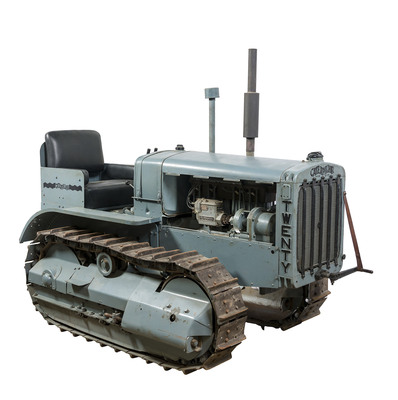Cornhusker - P.A. Barbat Engineering acme model
Country
Australia
State/Province
Queensland
See full details
Object detail
Description
This is an early 1900s four-wheeled P.A. Barbat Engineering Acme model cornhusker, sheller and bagger. It has a wooden frame that is painted maroon with some white trim and green panels. The name of the manufacturer, P.A. Barbat, is painted on both sides of the cornhusker in yellow.
Classification
RURAL INDUSTRY Agriculture Harvesting
Maker
Production place
Measurements
L6929 x W1898 x H2740mm
Media/Materials description
Wood (indeterminate)
Steel
Rubber
Paint
Steel
Rubber
Paint
Signature/Marks
P.A. BARBAT \ ENGINEER \ IPSWICH
P.A. BARBAT \ MANUFACTURED IPS. QLD
P.A. BARBAT
B \ 98
P.A. BARBAT \ MANUFACTURED IPS. QLD
P.A. BARBAT
B \ 98
History and use
This machine is an 'Acme' corn husker, sheller and bagger was made by F.E. Barbat & Sons of Ipswich in the 1920s. This manufacturer was a prominent engineering company and foundry located in Lowry St North Ipswich. They produced a wide variety of products as well as the corn husker, including boilers and railway wagons, for the Ipswich Railway Workshops. They were contracted by the Ipswich Railway Workshops to produce rolling stock and had their own railway siding. The manufacture date is not identified but it is believed to be post 1923 as it bears the name of P.A. Barbat. P.A. Barbat was F.E. Barbat's som and took over the company post 1923.
The 'ACME' cornhusker was extremely popular with farmers. There were 4 models. This machine is believed to be either a No.3 (50 to 80 bushels per hour capacity) or a No. 3A (110 to 120 bushels per hour capacity), The patent for these machines was owned by F.E. Barbat. The company had a special woodworking plant for building these machines at their foundry in Lowry St, North Ipswich, however they still found it difficult to keep up with demand. They were sold across Queensland, South Australia and New South Wales.
This machine is representative of the corn husker owned by the Thiess family. A corn husker, chaff cutter and an International Harvester Titan 10-20 tractor were purchased by Henry Thiess for his sons in the early 1920s, to use to earn an income as the farm could not produce enough to support his family of 11 children.
The 'ACME' cornhusker was extremely popular with farmers. There were 4 models. This machine is believed to be either a No.3 (50 to 80 bushels per hour capacity) or a No. 3A (110 to 120 bushels per hour capacity), The patent for these machines was owned by F.E. Barbat. The company had a special woodworking plant for building these machines at their foundry in Lowry St, North Ipswich, however they still found it difficult to keep up with demand. They were sold across Queensland, South Australia and New South Wales.
This machine is representative of the corn husker owned by the Thiess family. A corn husker, chaff cutter and an International Harvester Titan 10-20 tractor were purchased by Henry Thiess for his sons in the early 1920s, to use to earn an income as the farm could not produce enough to support his family of 11 children.
Associated person
Registration number
R6661




